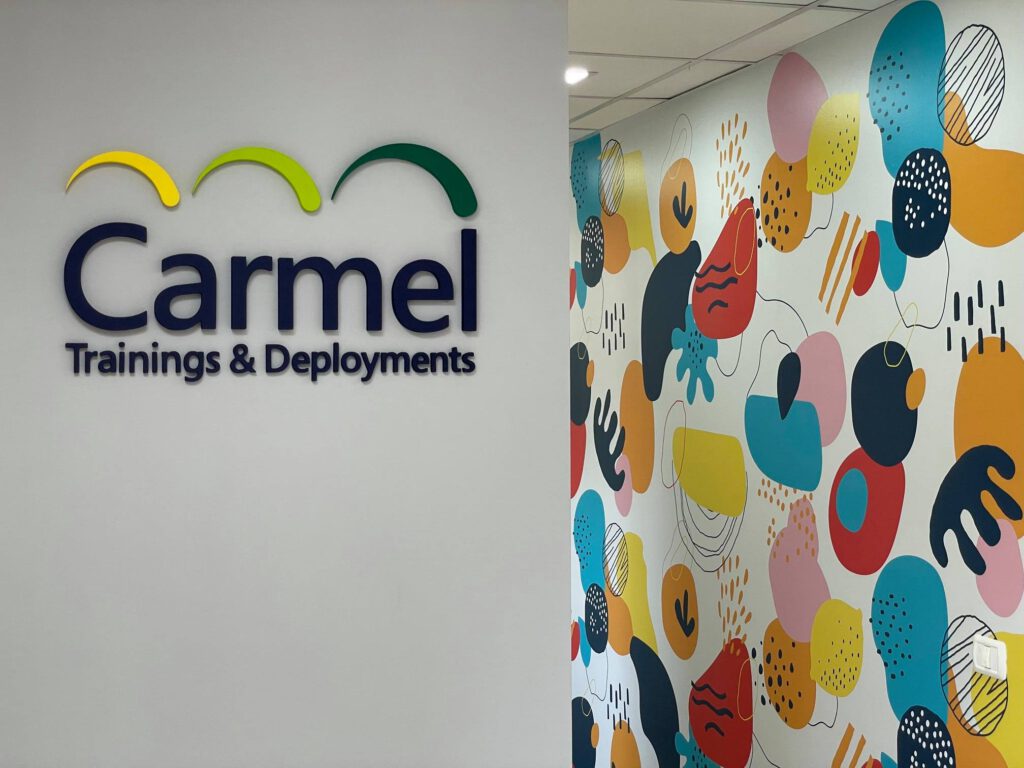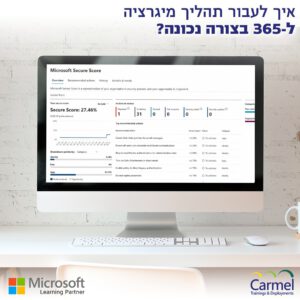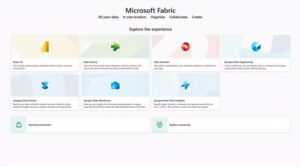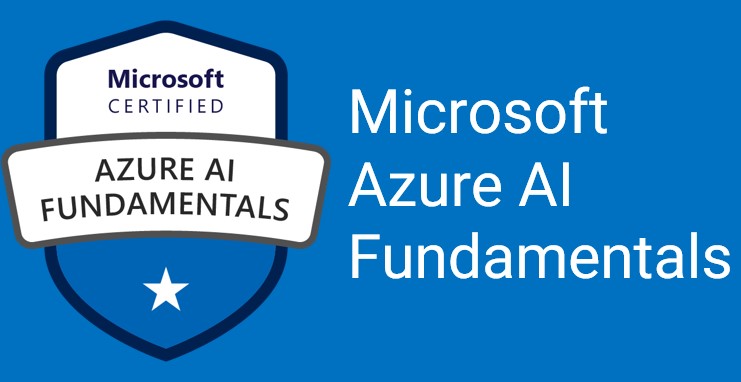About this course
This course is intended for IT professionals with some experience in Windows Server 2012, or later. It should serve as a comprehensive guide for key areas of administration of Windows Server 2022 and a one-stop-shop for all Windows Server administrators that needs additional knowledge on configuring and maintaining the most important features of this product. The course begins with an administration techniques overview, and then continues to topics such as identity services, networking, virtualization, high availability, disaster recovery, and other. This is a very extensive course, with a lot of content and labs, and it can serve both for exam preparation and as a helpful guide when administering a Windows Server environment.
Audience Profile
This course is intended for IT professionals who have some experience working with Windows Server and are wanting a five-day course that covers the administration of core components and technologies in Windows Server 2022. This course also helps server administrators from previous Windows Server versions to update their knowledge and skills related to Windows Server 2022.
At Course Completion
- Administer Windows Server 2022 and earlier versions.
- Administer and configure networking services in Windows Server 2022.
- Administer and configure virtualization services in Windows Server 2022.
- Administer and configure security services in Windows Server 2022.
- Administer and configure high availability and disaster recovery services in Windows Server 2022.
Course Outline
Module 1: Windows Server Administration
This module covers administration tools for Windows Server, and it also introduces versions of Windows Server 2022.
Lessons
- Overview of Windows Server administration principles and tools
- Introducing Windows Server 2022
- Overview of Windows Server Core
Lab 1: Deploying and configuring Windows Server Core
- Exercise 1: Deploying and configuring Server Core
- Exercise 2: Implementing and using remote server administration
After completing this module, students will be able to:
- Describe and use administration tools in Windows Server
- Describe Windows Server 2022 and its key features
- Implement and use Server Core
Module 2: Identity Services in Windows Server
This module covers important identity roles in Windows Server. In the first place, it discusses Active Directory Domain Services, Certificate services, and cloud-based identity service Azure AD.
Lessons
- Overview of AD DS
- Deploying Windows Server domain controllers
- Overview of Azure AD
- Implementing Group Policy
- Overview of AD CS
Lab 1: Implementing identity services and Group Policy
- Exercise 1: Deploying a new domain controller on Server Core
- Exercise 2: Configuring Group Policy
- Exercise 3: Deploying and using certificate services
After completing this module, students will be able to:
- Describe AD DS and explain how it works
- Deploy Windows Server domain controllers
- Describe Azure AD
- Use Group Policy to manage Windows Server based environment
- Describe and use AD CS
Module 3: Network Infrastructure Services in Windows Server
This module covers core networking services in Windows Server – DHCP, DNS and IPAM.
Lessons
- Deploying and managing DHCP
- Deploying and managing DNS services
- Deploying and managing IPAM
Lab 1: Implementing and configuring network infrastructure services in Windows Server
- Exercise 1: Deploying and configuring DHCP
- Exercise 2: Deploying and configuring DNS
- Exercise 3: Implementing IPAM
After completing this module, students will be able to:
- Describe, configure, and use DHCP service in Windows Server
- Describe, configure, and use DNS
- Describe, configure, and use IPAM to manage networking services
Module 4: File servers and storage management in Windows Server
This module covers services that deal with file systems, volumes, and storage. Students will also learn about data deduplication, sharing, iSCSI, and DFS services.
Lessons
- Volumes and file systems in Windows Server
- Implementing sharing in Windows Server
- Implementing Storage Spaces in Windows Server
- Implementing Data Deduplication
- Implementing iSCSI
- Deploying DFS
Lab 1: Implementing storage solutions in Windows Server
- Exercise 1: Implementing Data Deduplication
- Exercise 2: Configuring iSCSI storage
- Exercise 3: Configuring redundant storage spaces
- Exercise 4: Implementing Storage Spaces Direct
After completing this module, students will be able to:
- Describe volumes and file systems in Windows Server
- Implement sharing in Windows Server
- Describe and implement Storage Spaces
- Describe and configure Data Deduplication service
- Describe iSCSI
- Deploy DFS
Module 5: Hyper-V virtualization and containers in Windows Server
In this module, students learn about virtualization services in Windows Server. The module covers Hyper-V, options to secure virtualization environment, containers, and Kubernetes.
Lessons
- Hyper-V in Windows Server
- Configuring VMs
- Securing virtualization in Windows Server
- Containers in Windows Server
- Overview of Kubernetes
Lab 1: Implementing and configuring virtualization in Windows Server
- Exercise 1: Creating and configuring VMs
- Exercise 2: Installing and configuring containers
After completing this module, students will be able to:
- Describe and use Hyper-V platform in Windows Server
- Configure VMs on Hyper-V platform
- Secure virtualization environment in Windows Server
- Describe Containers
- Describe Kubernetes
Module 6: High availability in Windows Server
This module covers high availability in Windows Server. It is primarily focused on Failover Clustering feature.
Lessons
- Planning for failover clustering implementation
- Creating and configuring failover clusters
- Overview of stretch clusters
- High availability and disaster recovery solutions with Hyper-V VMs
Lab 1: Implementing failover clustering
- Exercise 1: Configuring iSCSI storage
- Exercise 2: Configuring a failover cluster
- Exercise 3: Deploying and configuring a highly available file server
- Exercise 4: Validating the deployment of the highly available file server
After completing this module, students will be able to:
- Plan failover clustering implementation
- Create failover clusters
- Describe stretched clusters
- Apply failover clustering to achieve high availability with Hyper-V platform
Module 7: Disaster recovery in Windows Server
This module covers technologies to implement disaster recovery in Windows Server environment.
Lessons
- Hyper-V Replica
- Backup and restore infrastructure in Windows Server
Lab 1: Implementing Hyper-V Replica and Windows Server Backup
- Exercise 1: Implementing Hyper-V Replica
- Exercise 2: Implementing backup and restore with Windows Server Backup
After completing this module, students will be able to:
- Describe and implement Hyper-V Replica
- Implement backup and restore with Windows Server backup
Module 8: Windows Server security
In this module, students learn about security technologies that address various critical components in Windows Server environment.
Lessons
- Credentials and privileged access protection in Windows Server
- Hardening Windows Server
- JEA in Windows Server
- Securing and analyzing SMB traffic
- Windows Server update management
Lab 1: Configuring security in Windows Server
- Exercise 1: Configuring Windows Defender Credential Guard
- Exercise 2: Locating problematic accounts
- Exercise 3: Implementing LAPS
After completing this module, students will be able to:
- Describe credentials and privileged access protection
- Describe and perform hardening Windows Server
- Describe and implement JEA in Windows Server
- Describe who to secure and analyze SMB traffic
- Describe and implement Windows Server update management
Module 9: RDS in Windows Server
This module covers Remote Desktop services in Windows Server. It also deals with VDI implementations.
Lessons
- Overview of RDS
- Configuring a session-based desktop deployment
- Overview of personal and pooled virtual desktops
Lab 1: Implementing RDS in Windows Server
- Exercise 1: Implementing RDS
- Exercise 2: Configuring RemoteApp collection settings
- Exercise 3: Configuring a virtual desktop template
After completing this module, students will be able to:
- Describe and configure RDS
- Configure a session-based desktop deployment
- Implement personal and pooled virtual desktops
Module 10: Remote access and web services in Windows Server
In this module, students learn about remote access technologies for Windows Server, as well as about IIS deployment and usage.
Lessons
- Overview of RAS in Windows Server
- Implementing VPNs
- Implementing NPS
- Implementing Always On VPN
- Implementing Web Server in Windows Server
Lab 1: Deploying network workloads
- Exercise 1: Implementing Web Application Proxy
- Exercise 2: Implementing VPN in Windows Server
- Exercise 2: Deploying and configuring Web Server
After completing this module, students will be able to:
- Describe and implement RAS in Windows Server
- Describe and implement VPNs
- Describe and implement NPS
- Describe and implement Always On VPN
- Describe and implement Web Server role in Windows Server
Module 11: Server and performance monitoring in Windows Server
This module covers monitoring tools and technologies available in Windows Server.
Lessons
- Overview of Windows Server monitoring tools
- Using Performance Monitor
- Monitoring event logs for troubleshooting
Lab 1: Monitoring and troubleshooting Windows Server
- Exercise 1: Establishing a performance baseline
- Exercise 2: Identifying the source of a performance problem
- Exercise 3: Viewing and configuring centralized event logs
After completing this module, students will be able to:
- Describe and use performance monitoring tools
- Describe and use server monitoring tools
- Use event logs for troubleshooting
Module 12: Upgrade and migration in Windows Server
This module covers available tools in Windows Server for server upgrade and migration. It also covers AD DS migration and upgrade process.
Lessons
- AD DS Migration
- Storage Migration Service
- Windows Server migration tools
Lab 1: Migrating server workloads
- Exercise 1: Selecting a process to migrate server workloads
- Exercise 2: Planning how to migrate files by using Storage Migration Service
After completing this module, students will be able to:
- Describe and perform AD DS migration and upgrade
- Describe and perform storage migration
- Describe and use Windows Server migration tools.
Prerequisites
- Some exposure to and experience with AD DS concepts and technologies in Windows Server 2016 or later
- Experience working with and configuring Windows Server 2016 or later
- Experience and an understanding of core networking technologies such as IP addressing, name resolution, and Dynamic Host Configuration Protocol (DHCP)
- Experience working with and an understanding of Microsoft Hyper-V and basic server virtualization concepts
- An awareness of basic security best practices
- Experience working directly with Windows client operating systems such as Windows 10 or later
- Basic experience with Windows PowerShell
מה זה Windows Server?
Windows Server היא מערכת הפעלה שרתית מבית מיקרוסופט. מערכת הפעלה מגוונת, בעלת יכולות מתקדמות ומספקת שירותים שונים לארגונים גדולים כקטנים.
בין השאר המערכת מספקת:
• שירותי Active Directory לצורך ניהול משתמשים, מחשבים ומשאבים ארגוניים.
• ניהול מערכות קבצים והרשאות- File Servers
• שירותי תשתיות Infrastructure כגון DHCP, DNS.
• שירותי Hyper-V לצורך מערכות וירטואליות Virtual Machines.
• מערכת המהווה תשתית למערכות שרתיות אחרות כגון מסדי נתונים (SQL) שירותי WEB ועוד.
• יכולת עבודה בצורה היברידית מול שירותי ענן ושרתים בענן.
האם קל ללמוד Microsoft Server?
לימוד מערכת ההפעלה Windows Server נחשב לקל יחסית ואינו דורש ידע קודם או ידע בתכנות או בתחומים אחרים. הקורס מיועד גם למי שמתחיל בתחום ה-IT וניהול הרשתות.
יחד עם זאת, הקורס מקיף מאוד וכולל לימוד של תחום שלם, מעבדות תירגול מפותחות ומעניינות ונותן תמונה מקיפה ורמת הבנה וידע נרחבת לתחום ניהול רשתות.
עם תום הקורס ניתן לגשת למבחני הסמכה של מיקרוסופט ולהוציא תעודה רישמית.
מה היתרונות של Windows Server?
למערכת ההפעלה השרתית Windows Server יתרונות ויכולות רבות.
המערכת מציעה שירותי ניהול לרשת מרמת התשתיות ועד רמת המשתמשים והאובייקטים ברשת.
יתרון נוסף של Windows Server הוא ביכולות המגוונות של מערכת ההפעלה. המערכת בנויה להוות תשתית תוכנתית לאפליקציות מבית מיקרוסופט ושל יצרנים אחרים המסתמכים עליה.
מערכת ההפעלה בנויה לתמוך בעולם היברידי שבו חלק ממשאבי הארגון נמצאים ברשת המקומית וחלקם נמצאים בענן.
מערכת ההפעלה בנויה על פי חשיבה עיסקית ויכולה להוות תשתית לכל סוג של ארגון ובכל גודל ולתת מענה לצרכים רבים.
למה משמש Windows Server?
Windows Server מתאים לארגונים קטנים כגדולים ולתת מענה למגוון גדול של צרכים לכל סוג של ארגון.
מערכת ההפעלה מודרנית, עדכנית ומאובטחת מתמיד ומספקת שירותי תשתיות וניהול נרחבים.














